Why Are New Pathways Essential?
Key Points
-
Across the nation, leading institutions and organizations are identifying pathways as a core component of a thriving economy and a missing piece from the K-12 experience.
-
The new job of school is to help young people figure out who they are, what they’re good at, what they care about, and how/where to begin their contribution to their communities, to themselves, and to the world.
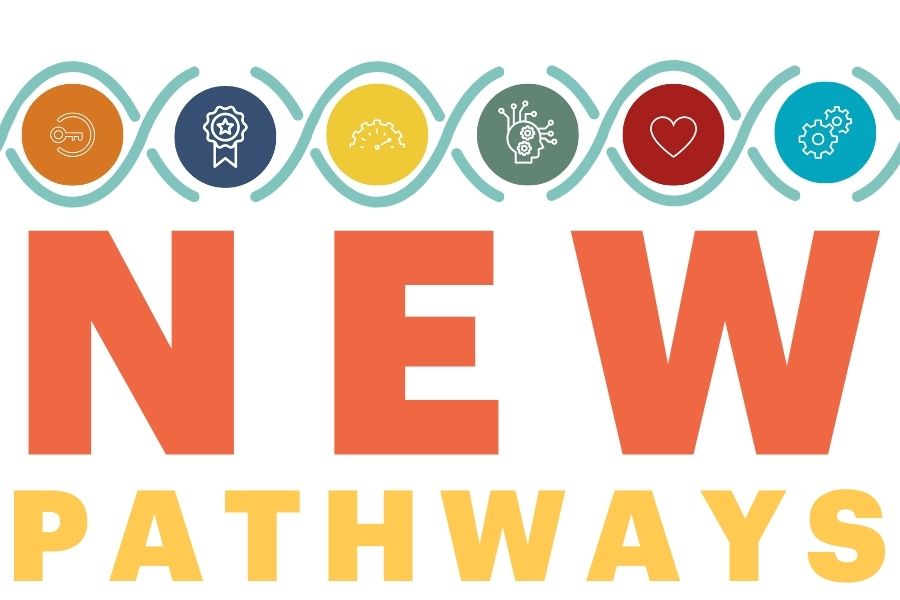
“The American dream is really faded. Back in the 1940s and 1950s, if you were a kid growing up in this country, you could pretty well expect that you were going to achieve the American dream as defined as upward mobility, rising up relative to where your parents were. And if you look at kids entering the labor market today, those prospects don’t look as good.” — Dr. Raj Chetty
The American Dream — the belief that America offers everyone the opportunity of a good and successful life achieved through hard work — worked for some over the last hundred years (particularly for those born into some inherited wealth). Today, however, most feel like America’s economic mobility escalator is out of order. This is not just anecdotal. There is evidence that upward economic mobility has declined and income inequality has risen in the United States in recent decades. Sluggish wage growth over the last 50 years damped the American Dream with fewer people from lower and middle families climbing the economic ladder.
To bypass the rusty escalator, society created a number of clunky detours — a complex and inequitable function of family, economic, and education variables. The main entrance to the economic mobility escalator is high school, the end of compulsory education, and the on-ramp for work and further education. Things are changing.
In the early innings of the Fifth Industrial Revolution, diverse teams are attacking new problems with smart machines. Everything routine is being automated leaving high demand for nonroutine services, both low and high skill, and a barbell economy. Some are riding the AI escalator while others feel trapped in the economic basement. Because of this, high school is not the make-or-break entry point that it once was. The new AI-powered platform economy is making it easier to step into gig work, entrepreneurship, and into further learning. The need to rejuvenate economic mobility and the opportunities in this new era of human-machine collaboration suggests it’s time for new pathways.
Why Are Pathways Necessary?
Across the nation, leading institutions and organizations are identifying pathways as a core component of a thriving economy and a missing piece from the K-12 experience. Alongside American Student Assistance, the Bill & Melinda Gates Foundation, the Walton Family Foundation, and Stand Together we are investigating how to better embed pathways to help all learners find success in what’s next.
We know a few things to be true:
1. Most teens leave high school unprepared for what’s next. Prepandemic, most colleges reported that students were not ready for college-level work. The pandemic made the college preparation gap worse. Most teens are not leaving high school job ready either. There are about 11 million jobs open in America — the result of a complicated COVID overhang and new economy labor shortage.
Takeaway: New pathways are meaningful sequences of learning experiences linked to opportunity. The result in experiencing success in what’s next: real work experience, college credit, and industry-recognized credentials.
2. Many students are not engaged in school. A recent YouthTruth Survey found that about 60% of high school students are engaged. Only 52% said they enjoy coming to school and 48% said what they are learning in school helps them outside of school. The pandemic increased trauma, hopelessness, and dissatisfaction with traditional education, particularly rote one-size-fits-all learning.
A new Populace study found that “Americans do not care if all students study the same thing compared to them getting to choose courses based on their individual interests.” They also found that “Americans prefer an education system where all students receive the unique supports that they need throughout their learning and all students get whatever amount of time they need to learn a new concept or skill at their own pace.” Also, “Americans want to grant more control to students themselves, prioritizing a K-12 education where all students have the option to choose the courses they want to study based on interests and aspirations.”
Takeaway: New pathways are co-authored experiences and journeys with personalized and localized guidance and support.
3. Most teens feel unprepared for postsecondary decisions. A recent survey suggests that three-quarters of students feel less than prepared to make college and career decisions. Nearly half of those starting college leave without a credential. This suggests bad-fit decisions and results in the new worst-case scenario of debt without a degree.
Takeaway: New pathways help learners identify strengths and interests and match them with possible futures. With a growing sense of purpose, learners spot opportunities and develop an entrepreneurial mindset.
4. More opportunities for some. The loss of traditional jobs during the pandemic and the rise of the platform economy boosted business starts to more than 5 million in 2021 and 2022 (double the rate of 10 years ago). An Adobe survey found that about 45% of Gen Z creators surveyed said they aspire to own a business and make money from content shared online. And, While millennials are experimenting with having a side hustle alongside a day job, “Gen Z is focused more on making a project into a career,” said Maria Yap, Vice President at Adobe. “They’re thinking, no — my regular job could be the thing that I’m passionate about.”
Teens have more opportunities than ever to explore possible futures, enter employment, and make a contribution using smart tools, but the visibility and access to opportunity are not equitably distributed. Social capital remains a huge obstacle to spotting and accessing opportunity for many learners.
Takeaway: New pathways provide equitable accessible, meaningful accommodation and support the development of social capital needed to access opportunity.
Or to put it more succinctly, the problems above point to each of the four design principles we have instituted for this campaign:
|
Problems |
New Pathway Design Principles |
|
Low levels of college and work readiness |
Intentional: a meaningful sequence of powerful learning experiences back mapped from opportunity. Learners experience success in what’s next: real work experience, college credit, and industry recognized credentials |
|
Low engagement, low depth of knowledge |
Curated: co-authored experiences and journeys |
|
Lack of direction |
Purposeful: identify strengths, interests, and values; spot opportunities and deliver value (entrepreneurial mindset) with personalized and localized guidance |
|
Opportunity is uneven |
Equitable accessibility & accommodation, support & social capital |
The Six Pillars of Pathways
The new job of school is to help young people figure out who they are, what they’re good at, what they care about, and how/where to begin their contribution to their communities, to themselves, and to the world.
We have structured this campaign around six pillars of New Pathways, core components of what a supported pathway vision looks like.
Unbundled Learning: Unbundled Learning removes all the barriers and allows learning to happen at school, after school, with industry partners and anywhere a learner can imagine. It is the foundation for which new learning models are built and where learners are supported and systems are scaled.
Credentialed Learning: Credentialed Learning allows students to have ownership of creating their academic selves, determine where they’re headed, and with whom they share their journey through digital credentials and learning records.
Accelerated Learning: With Accelerated Pathways, learners move past imagining success, and instead experience success through curated learning experiences such as early college, boot camps, dual enrollment, earn-and-learn ladders, technical training, and apprenticeships. These clearly, articulated pathways enable opportunities that can reduce one or even two years of college and cut costs.
New Learning Models: With New Learning Models, the learner experience is co-authored with students. Centered around personalized and competency-based learning, social-emotional learning and skill credentialing, New Learning Models link experiences to create new and emerging school architectures. New Learning Models is the heart of how pathways work.
Support and Guidance: With Support and Guidance, strong advisory systems build purpose, help learners explore careers, build their social capital and skyrockets their potential. Strong Support and Guidance systems are critical for learners to increase their agency and sense of belonging. When Support and Guidance is linked to pathways, learners know where they’re going, how to get there and who can provide support and resources along the way.
Policies and Systems: Policies and Systems allow pathways to be brought to scale without only relying on the traditional ways of learning. Whether a grant, platform, technical assistance, diploma or curriculum network, aligned Policies and Systems are necessary for pathways to thrive. This pillar plays an integral role in shaping accessible and equitable experiences for all learners so that learning can be personalized, co-authored and sustainable.
Elements of New Pathways
A new pathway would contain at least some of the following elements, while an aspirational goal would be pathways that incorporate all of them.
|
Traditional High School |
New Pathways | |
|
Design |
Inherited list of required courses |
Experiences mapped from opportunity |
|
Learner Role |
Direction following recipient |
Engaged co-author |
|
Supports |
Some course-specific support |
Time and support to achieve mastery |
|
Learning model |
Tell, test, repeat |
Community connected projects |
|
Opportunity |
Course catalog |
Unbundled learning in & out of school |
|
Feedback |
Grades |
Performance assessment |
|
Guidance |
Occasional and limited |
Personalized and localized advice on next steps and possible futures |
|
Community Connections |
Limited |
Relevant work experience and social capital |
|
Communication |
Transcript of courses and grades |
Digital credentials in portable learner record |
|
Time and cost |
4+4+ years of high school and college with weak articulation and coherence |
1-2 years of accelerated progress to credential with strong articulation and coherence |
Inspiring Pre-Existing Pathways
While much of this work requires laying a new foundation in our models of school and assessment, pre-existing pathway exemplars do exist that demonstrate some but not all dimensions of the above table. Project Lead the Way includes effective STEM curriculum pathways. NAF and LinkedLearning exhibit the power of well-laid career pathways. AVID works towards college and career readiness. P-TECH schools offer accelerated pathways to help young learners save time and money.
While these early efforts are helpful to orient towards, there is a great opportunity to expand these beyond being linear and course bound. An opportunity to incorporate more co-authoring with learners, an opportunity to further unbundle the learning experiences into their communities, and to include even more work-based learning and guidance experiences.
We continue to highlight exemplars, learnings, and more here — be sure to follow along.


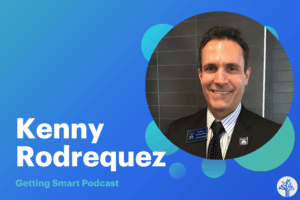
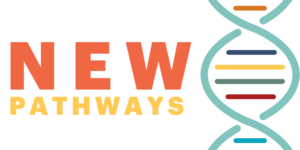
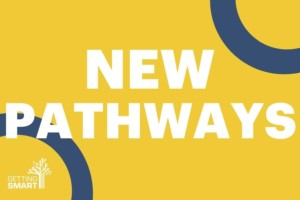
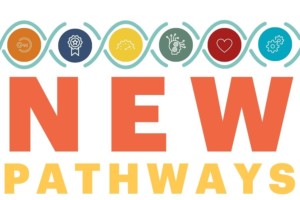
Ron Krate, PhD
For a period around 1943 - 1974 it worked pretty well. Then again, 1965-1969
Ron Krate, PhD
Please add a Share to LinkedIn
Hillary Damke
This is the way forward Next smart generation for better society
John
Your concept of New Pathways is a useful facet of a larger model aligned with the 4IR I have been working on. Every community takes charge of its development and networks with other communities. Working with the state and holding it accountable. balancing the power of the software giants. What drives it is small and medium businesses making money. You may want to discuss this larger idea and how you fit into it. I also have an educational project in mind. Last year the EU hired me as a curriculum expert with experience as a senior publinc servant to develop online programmes to retrain public servants. This is too late - I want to help develop programmes that start the development in pre-and primary school. It is time for another Sputnik moment for all countries.